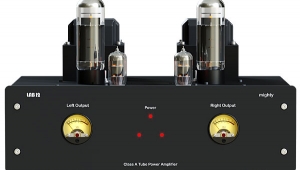| Columns Retired Columns & Blogs |
I ordered the Elear from Todd the Vinyl Junkie. Nice friendly guy BTW. I wanted the Utopia, but at this point I decided I'd try the Elear first, on the premise that I'd be sharing my experience with at least a few people, whereas with the Utopia I figured I'd be all alone. If the Elear isn't convincing enough, I'll send it back for the Utopia, and that's what I'd like to read more of on the subject - i.e. people who bought the Elear and then decided they needed the better (or more neutral?) Utopia, and how that worked out for them.












































